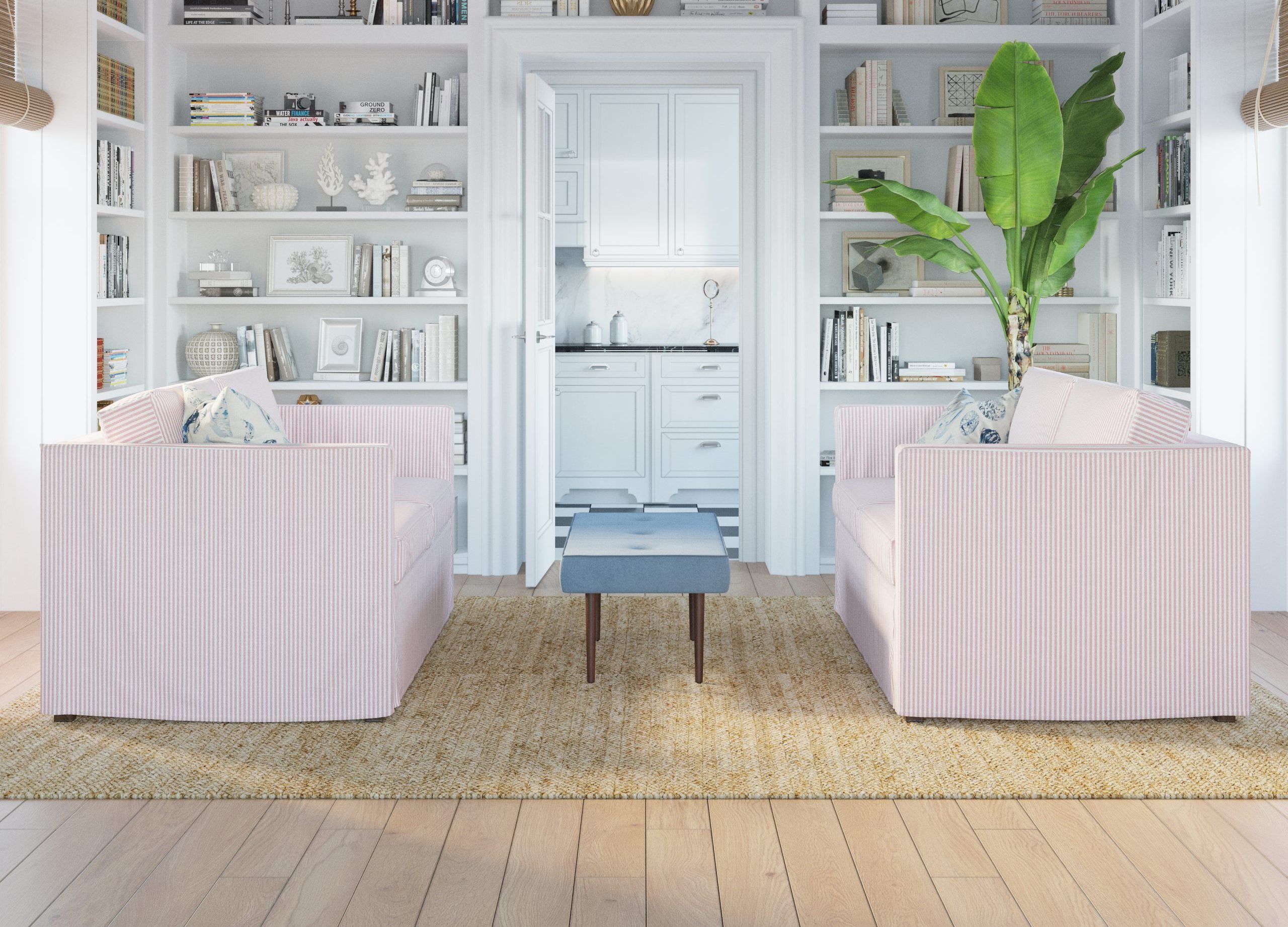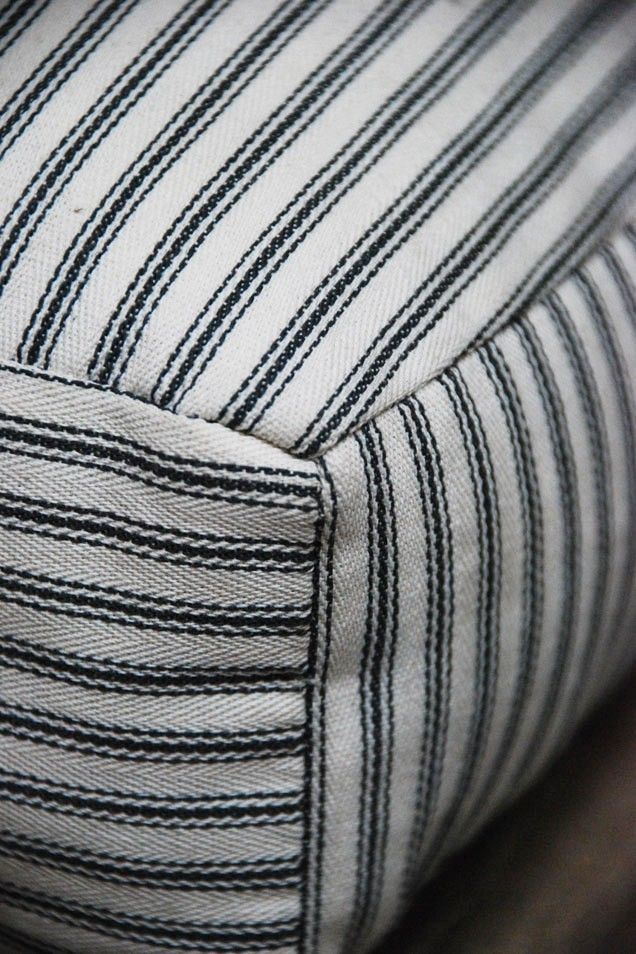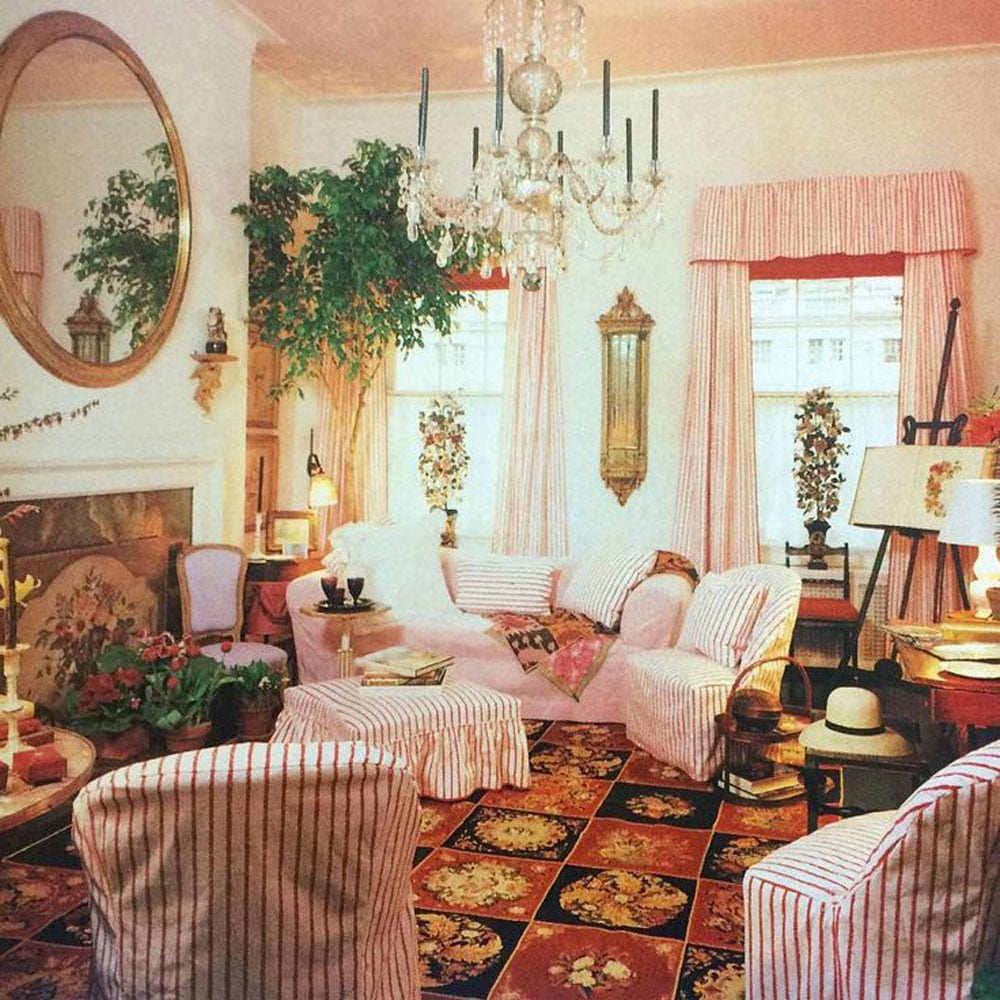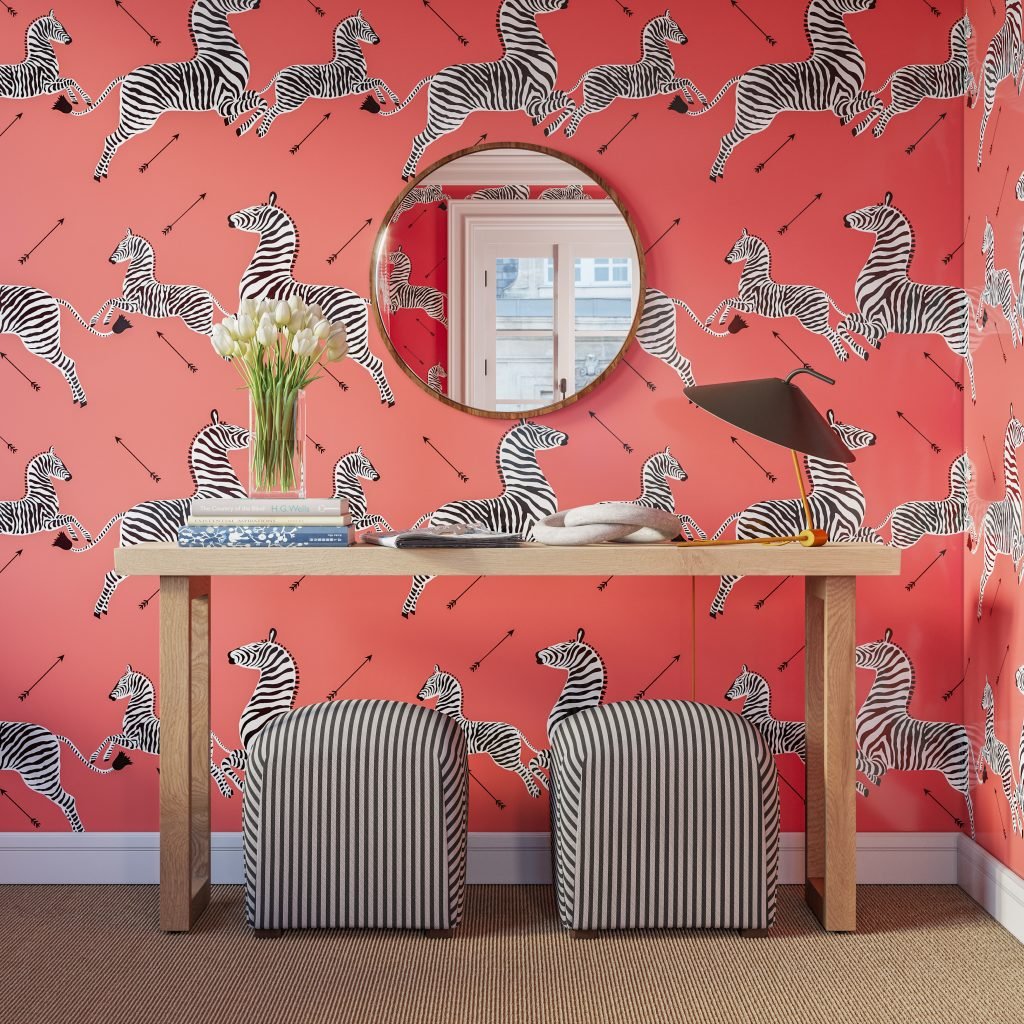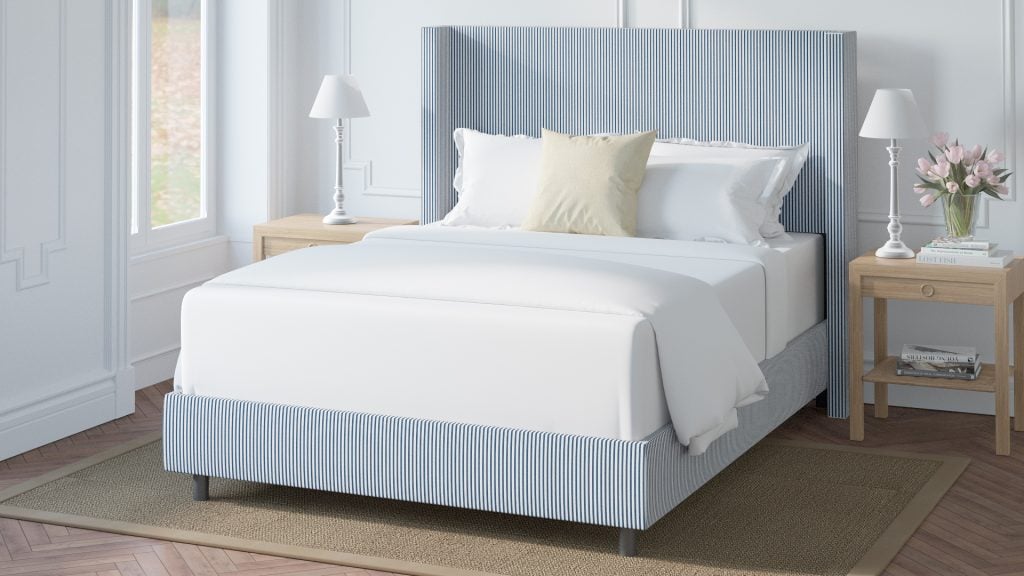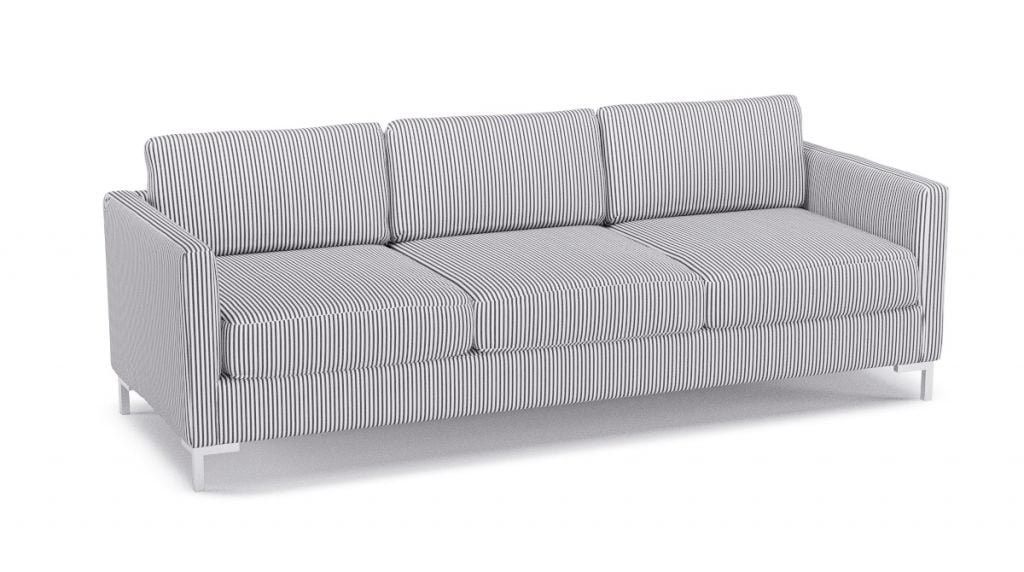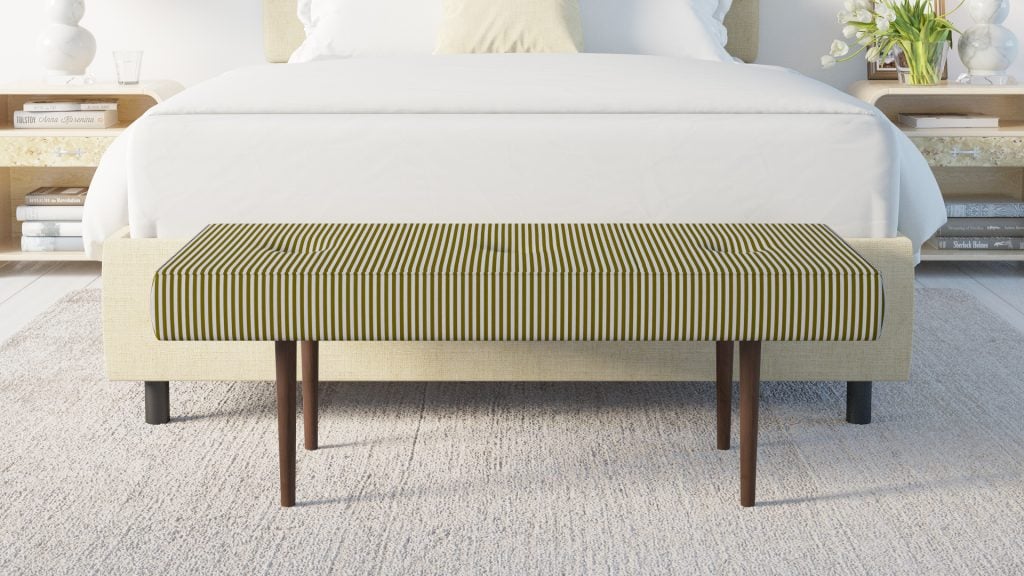What is Ticking Stripe Fabric?
To answer this, let’s first take a quick little jaunt back in time to see how and why this humble fabric came to have such hero status.
Picture you’re a hardworking farmer back in the middle ages (just go with us on this for a minute). Or better yet, a wealthy merchant living in old-world Paris. At the end of a long day of tilling the soil or trading wares, you collapse onto your mattress made of…straw? Yes, that’s right. Pokey, crinkly, scratchy straw.
Ouch.
We humans being the comfort creatures we are, a better solution clearly was needed. Hence the invention of a hardy, woven fabric to encase the straw filling. Called “ticking stripe” fabric, based on the Greek word theka, which means “case” or “covering,” this fabric was woven with a special herringbone pattern and then coated with wax or starch to make it impervious to those pesky poke-throughs of sharp hay. The two-tone stripes on this fabric evolved somewhat naturally as a way to delineate the ribbons of herringbone running through it. For hundreds of years, ticking stripe remained such the standard for mattresses that some still refer to informally as “mattress stripe.”
In recent years, mattress manufacturers have moved more toward damask for their mattress covers, but no matter, as ticking stripe has long since moved on to become a home décor superstar in its own right. The legendary American decorator Sister Parish is credited with bringing this utilitarian fabric into the refined sitting rooms of New York City in the 1940s, and today these casually elegant stripes are seen on everything from sofa upholstery to drapery to duvet covers to bed skirts to tote bags.
What is Ticking Fabric Made Of?
Like the Greek gods who share its linguistic origins, ticking stripe fabric owes its commanding popularity to two factors: its strength and its good looks.
Made of tightly woven linen or cotton fabric, traditional woven ticking stripe is hardy yet soft. You may see its material also referred to as cotton duck, or duck cloth. Similar to denim in its medium weight, it stands up well to everyday wear and tear. If you’re planning to clean the fabric, be sure to dry clean or tumble dry low to avoid excessive shrinking or color bleeding. And in case you need proof of its functionality, think back to its humble origins: If it can contain sharp sticks of hay, it certainly can contain and protect your down-filled sofa cushions.
Besides its mighty functionality, ticking stripe is almost universally appealing. There’s just something about those rhythmic stripes! Scholars say that stripes resonate so deeply with us because stripes speak to our intrinsic need to bring order to the chaos of nature. Probably the same reason gingham – whose stripes comprise a checked pattern – is also a favorite. But you don’t even need to know the deeper reason for its allure to love how it looks.
How and Where to Use Ticking Stripe Fabric
Ticking stripe fabric can be used in countless ways throughout your home. In a lot of ways, it can be a terrific equalizer, helping to bring balance to a room. Extraordinarily versatile, it can elevate a simple beach chair or relax a formal-style room, much like Sister Parish became known for in sitting rooms of the 1940s, often by pairing this fabric with chintz.
Ticking stripe fabric is widely used for furniture, but it also makes for gorgeous drapery in moods ranging from snappy to romantic. However, given that a lighter fabric is needed for drapery, it is best to go with a printed version of ticking stripe rather than a traditional woven twill. These printed drapery fabric versions are widely available.
And don’t forget outdoor furniture! Many manufacturers now make ticking stripe upholstery fabric specially treated for outdoor use, which looks especially great when done in bold colors.
Different Types of Ticking Fabric
Here are a few of our favorite ticking stripe looks:
You can never go wrong with a classic navy-and-white ticking stripe. This combination is endlessly versatile. For a crisp, coastal look, use this colorway in combination with white and rattan furniture, sisal rugs, and sparkling polished nickel fixtures. If beachy casual is your thing, opt for slipcovers in navy and white ticking stripe with white and red throw pillows.
The close cousin to navy blue and white, pale blue and cream ticking stripe offers a slightly softer version that is ideal for soothing bedrooms:
Shop the look: Modern Wingback Bed in Azul Ticking Stripe by SF Girl by Bay
Black and cream ticking stripe looks dashingly handsome on a modern-style sofa:
Shop the look: Modern Sofa in Black Ticking Stripe by SF Girl by Bay
Consider gold ticking stripe for a vintage feel:
Shop the look: Mid-Century Bench in Gold Ticking Stripe by SF Girl by Bay
Finally, if you’re decorating a kids’ room or looking to add a dash of feminine vibe to your space, we love a pink ticking stripe.
What Patterns Go with Ticking Stripe Fabric?
The better question to ask here would be, “What fabrics don’t go with ticking stripe fabric?”
The refined stripes of ticking stripe can read almost like a neutral, so when it comes to mixing it with other patterns, we say go for it! Some of our favorite combinations include ticking stripe with toile, plaid, or floral patterns. The only patterns you want to handle carefully when combining with ticking stripe are bold geometrics. With those, it’s best to stick to a tight color palate so the patterns complement each other. And if you still have questions, order a swatch or two to test your favorite combos together in real life.
However or wherever you choose to incorporate ticking stripe home décor fabric in your home, you’ll now know you’ve chosen a chic workhorse classic that has stood the test of time.
By: Debra Goldstein, Staff Writer, The Inside

